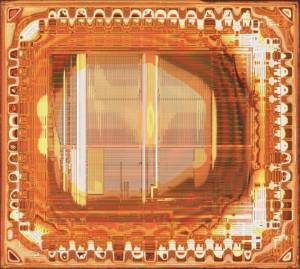Crack NXP Microcontroller P87LPC769 Internal Flash
Through interrupt with the CPU clock and do the modification on it, Crack NXP Microcontroller P87LPC769 Internal Flash has become possible, hereby we would like to introduce CPU Clock Modification: CLKR and DIVM.
For backward compatibility, the CLKR configuration bit allows setting the P87LPC769 instruction and peripheral timing to match standard 80C51 timing by dividing the CPU clock by two. Default timing for the P87LPC769 is 6 CPU clocks per machine cycle while standard 80C51 timing is 12 clocks per machine cycle.
This division also applies to peripheral timing, allowing 80C51 code that is oscillator frequency and/or timer rate dependent. The CLKR bit is located in the EPROM configuration register UCFG1, described under EPROM Characteristics.
In addition to this, the CPU clock may be divided down from the oscillator rate by a programmable divider, under program control. This function is controlled by the DIVM register to Crack NXP Microcontroller P89C838 Protected Firmware. If the DIVM register is set to zero (the default value), the CPU will be clocked by either the unmodified oscillator rate, or that rate divided by two, as determined by the previously described CLKR function.
When the DIVM register is set to some value N (between 1 and 255), the CPU clock is divided by 2 * (N + 1). Clock division values from 4 through 512 are thus possible. This feature makes it possible to temporarily run the CPU at a lower rate when recover MCU program, reducing power consumption, in a manner similar to Idle mode.
By dividing the clock, the CPU can retain the ability to respond to events other than those that can cause interrupts (i.e. events that allow exiting the Idle mode) by executing its normal program at a lower rate. This can allow bypassing the oscillator startup time in cases where Power Down mode would otherwise be used. The value of DIVM may be changed by the program at any time without interrupting code execution.


